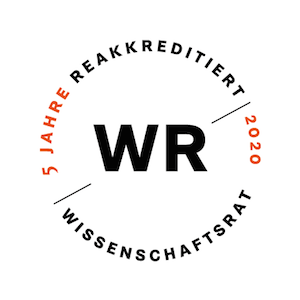What is a value chain?
A value chain describes the process by which a company transforms raw materials into finished products or services that are then delivered to the end customer. Each activity within the chain contributes to increasing the overall value and can be optimized to increase efficiency and competitive advantage.
Basic principles and components
The value chain comprises all activities that a company carries out to bring a product or service from the idea to the end customer. These activities are designed to increase the value of the product or service. The value chain can be divided into primary and supporting activities:
- Primary activities: These comprise the direct processes of manufacturing and distributing products and services. These include inbound logistics, operations, outbound logistics, marketing and sales as well as services.
- Supporting activities: These provide the necessary resources and infrastructure to carry out the primary activities efficiently. These include corporate infrastructure, personnel management, technology development and procurement.
Different types of value chains
Value chains can be structured differently depending on the industry and business model. In the manufacturing industry, the value chain often comprises a complex sequence of production steps, while in the service sector the focus is more on customer-oriented processes. Furthermore, global value chains that span multiple countries and locations can present additional challenges and opportunities, particularly in terms of logistics, communication and quality control.
This structure enables companies to analyze and optimize each step of the process in order to increase efficiency and competitiveness.
Value chain according to Porter
Michael Porter, a leading economist, introduced the concept of the value chain in the 1980s. His model provides a systematic method for analyzing a company's activities and their contribution to competitiveness.
Explanation of Michael Porter's model
Porter's value chain divides business activities into primary and supporting activities. This structure helps companies to analyze their internal processes and identify areas for efficiency improvements and cost reductions.
Primary activities
- Inbound logistics: All processes related to the receipt, storage and transportation of raw materials and intermediate products.
- Operations: Activities that lead to the conversion of inputs into finished products, including production and assembly.
- Outbound logistics: Processes that involve the transportation and storage of finished products until they are delivered to the end customer.
- Marketing and distribution: Activities that help get products to customers, including advertising, promotion and distribution channels.
- Services: Services that add value to products after the sale, such as customer service, repairs and maintenance.
Supporting activities
- Corporate infrastructure: Administrative, planning and control tasks that support the entire company.
- Human resources management: Activities related to the recruitment, training and motivation of employees.
- Technology development: Research and development as well as the implementation of new technologies to improve products and processes.
- Procurement: The process of purchasing raw materials, supplies and services required to carry out the primary activities.
Porter's model emphasizes the interdependence of these activities and shows how they can work together to create a competitive advantage. By specifically analyzing and optimizing each component of the value chain, companies can increase their efficiency, reduce costs and ultimately improve their market position.
Example for illustration
One example of a value chain could be the production of a T-shirt:
- Inbound logistics: Cotton is harvested from the fields and transported to a textile factory.
- Operations: The cotton is processed into fabric and then sewn into T-shirts.
- Outbound logistics: The finished T-shirts are packaged and delivered to wholesalers or retailers.
- Marketing and distribution: The T-shirts are advertised and sold through various distribution channels.
- Services: Customer service and returns management ensure that customers are satisfied and any problems are resolved.
The value chain is a useful concept for analyzing the various steps required to manufacture and deliver a product. By optimizing each of these steps, companies can increase their efficiency and improve their competitiveness.
Importance of the value chain for companies
The value chain is of central importance for companies, as it offers insights into the processes of value creation and provides starting points for improving efficiency and competitiveness. By analyzing and optimizing the individual steps, companies can make their processes more efficient, reduce costs and strengthen their market position.
Increased efficiency
Analyzing the value chain enables companies to identify and improve inefficient processes. By optimizing workflows and implementing modern technologies, companies can increase their production speed and make better use of resources.
Example: A car manufacturer that applies lean management principles can reduce production waste and shorten lead times, resulting in greater overall efficiency.
Cost reduction
By taking a detailed look at the value chain, companies can identify and eliminate unnecessary costs. This can be achieved through improved purchasing strategies, more efficient production methods or optimized logistics processes.
Example: An electronics manufacturer negotiates better conditions with suppliers and implements just-in-time methods to reduce storage costs and minimize capital commitment.
Improving competitiveness
A well-optimized value chain enables companies to react more quickly and flexibly to market changes. This improves the ability to bring innovative products to market faster and respond to customer needs.
Example: A technology company that has optimized its value chain through digital transformation can develop and market new software solutions more quickly, which puts it in a better position than its competitors.
Summary
The value chain offers companies a structured method for analyzing and improving their internal processes. By optimizing the value chain, companies can increase their efficiency, reduce costs and improve their competitiveness on the market. This requires continuous effort and innovation to adapt to ever-changing market conditions and ensure long-term success.
Examples of value chains in various sectors
The structure and process of the value chain can vary considerably depending on the industry. Here are some examples from different industries that illustrate how companies design and optimize their value chains.
Manufacturing industry
In the manufacturing industry, the value chain comprises numerous production steps, ranging from the procurement of raw materials to the delivery of the finished product. Each step in the chain contributes to increasing the value of the end product.
Example: A car manufacturer integrates various component suppliers to source parts such as engines and gearboxes. These parts are assembled into complete vehicles in the production facilities, which are then delivered to dealers worldwide.
Retail trade
In retail, the value chain focuses on the procurement of products, their distribution and customer service. Efficient logistics and good inventory management are crucial here.
Example: A fashion company buys fabrics and materials from various suppliers, produces the clothing in its own or outsourced factories and sells the products via its own stores, online stores and third-party providers. Good customer service and flexible return options increase the value for customers.
Food industry
The value chain in the food industry encompasses all steps from the cultivation of raw materials to the sale of finished food products. Efficiency and quality assurance are particularly important here.
Example: A food manufacturer buys agricultural products directly from farmers, processes them in its own factories and sells the finished food to supermarkets. The company ensures that all production processes meet the highest quality and hygiene standards.
Technology area
In the technology sector, the value chain is often complex and includes research and development, production and the market launch of new products. Innovative strength and rapid adaptation to market changes are crucial.
Example: A software company develops new applications through intensive research and development, tests these products thoroughly and finally markets them via various digital channels. Customer support and regular updates are important components of the value chain.
Summary
The value chain varies greatly depending on the industry, but the goal always remains the same: increasing efficiency and maximizing value. By optimizing the individual steps, companies can reduce their costs, improve product quality and increase their competitiveness
Optimization of the value chain
Optimizing the value chain is crucial to increasing efficiency, reducing costs and increasing competitiveness. Companies use various methods and techniques to continuously improve their value chain.
Lean Management
Lean management focuses on eliminating waste and improving process efficiency. By optimizing workflows, companies can produce faster and more cost-effectively.
Example: A car manufacturer implements lean methods to minimize production waste and increase efficiency.
Just-in-Time (JIT)
Just-in-time is a production method in which materials and components are delivered exactly when they are needed. This reduces storage costs and improves capital utilization.
Example: An electronics manufacturer uses just-in-time to keep stock levels low and only order the components required for production.
Total Quality Management
Total Quality Management is an approach that promotes the continuous improvement of all processes in the company. The aim is to improve product quality and increase customer satisfaction.
Example: A food manufacturer implements TQM to improve quality assurance in all production phases and to use customer feedback to further develop products.
Digital transformation
The integration of digital technologies into the value chain enables companies to automate their processes, analyze data in real time and react more quickly to market changes.
Example: A retail company uses big data and artificial intelligence to analyze consumer behavior and efficiently manage stock levels.














